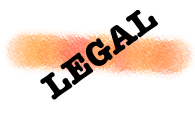 Greg from Hermosa asks:
Greg from Hermosa asks:
When using stories that were told to you – like by a police officer – that involve cases that have already been prosecuted – what is the general rule as to how much of the story you need to change, once the information is already in the public domain. Is changing a few names and locations enough? Or does it have to be more drastic than that?
And if so, how does Law and Order get away with it?
[Caveat: This is not legal advice, just thoughts on a weblog.]
This question is trickier than it sounds. When portraying real life events, there are two primary questions: (1) How close to the truth must you stay to avoid defamation or other types of lawsuits? and (2) what is the source of your information?
If you are telling a real life story, you are ordinarily protected from a defamation action if the story is true. However, if the story portrays events in the life of a private person (as opposed to a “public figure”), you may be liable for invasion of privacy even if the events you portray are true. On the other hand, if you are portraying the story of a “public figure”, you are protected from actions for defamation and, for the most part, privacy, as long as you do not exhibit “malice” in the story. “Malice” is usually defined as an intentional distortion or reckless disregard for the truth with intent to injure the party about whom the story is made.
A “public figure” is a person who intentionally injects himself or herself into the limelight, such as an entertainer or politician. Others can be “public figures” at least for limited purposes. For example, an accused murderer is a public figure, at least with respect to stories related to the murder.
The other important issue relates to the source of the material. You can freely use “facts” known to the general public because facts do not have copyright protection, only the expression of those facts (e.g. a newspaper article). However, if you are using stories told to you by a police officer, even if the subject matter of the story is generally known to the public, your information may contain the private impressions and experiences of the officer. That portion of the material is owned by the police officer and you need to obtain rights to use it. Similarly, if you are basing your story on newspaper accounts of the event, you must be careful not to include the impressions and experiences of the reporter. You can only use the “facts.” The line between facts and impressions and experiences is not always clear. For that reason, unless the event is widely known, most studios prefer to secure rights to some kind of material, whether it is a newspaper story, a book, or the rights to someone who participated in the event.
Examples:
1. “The Perfect Storm” – true story of a storm, but much information about the characters was fictionalized. In that case, the family of one of the dead crewmembers sued in Florida and lost. HELD: No defamation, no invasions of privacy, no malice, even if the events as portrayed were not accurate.
2. “Primary Colors” – obvious fictionalized version of Clinton’s rise to power. No defamation because (i) Clinton is a public figure and the story is “fair comment” and (ii) the story is clearly fictionalized and, while designed to comment on Clinton, it is obviously not intended to be his real story.
3. “Law And Order” – the writers take stories “ripped from the headlines” on a regular basis. They are protected because (i) “ripped from the headlines” by its nature means “public figure” and (ii) they are clear that the stories are fictionalized and only inspired by true events, not a portrayal of the event.
4. “Nixon” – the true to life story of Richard Nixon. The writers are protected because Nixon was the most public of public figures, President of The United States. He would have had to show that the material was untrue and written with the intent of injuring his reputation.
While studios are sued all the time when they produce real life stories, if you as a writer follow these basic guidelines, the real life nature of your story should not be a deterrent to selling it. Hopefully, it is an asset.
Good luck with your story.
Here’s a link to an article about how the creator of Will and Grace was sued because he had a verbal agreement with the person he based the character of Jack on. Not sure if the creator would have gotten sued had he not made a verbal agreement to compensate his friend for using him as the basis for a character. http://www.eonline.com/News/Items/0,1,11500,00.html
I wrote two books, the 1st was about a real murderer in my area, the 2nd was a sequel all with fictional characters. Since 1st uses supporting real life people even w/o malice can u be sued? Their stories were published in newsprint, books & fbi files,web & said should be told to prevent from happening again. Could I distort it w/o being sued?
awsome!! most helpful!!!!!